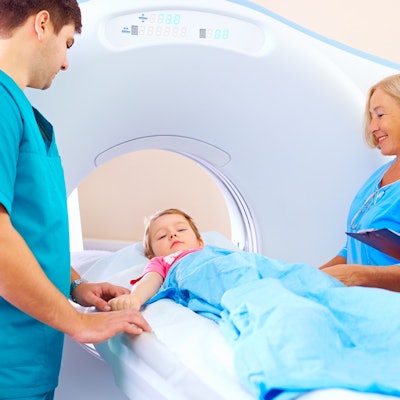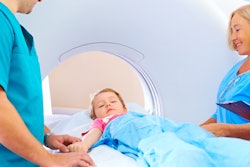
Does contrast-enhanced CT boost the incidence of acute kidney injury in children? It doesn't seem so, according to a study published December 6 in Radiology.
The results are good news for kids who need to undergo contrast-enhanced CT imaging, wrote a team led by Dr. Juan Calle-Toro of Children's Hospital of Philadelphia.
"In this 10-year retrospective single-center study, acute kidney injury was a rare event," the team noted.
Contrast-associated acute kidney injury tends to occur within 48 hours after iodinated contrast media is administered to a patient undergoing CT. The question of how prevalent it is after contrast-enhanced CT imaging among adults has been explored, but its incidence among children has not, Calle-Toro's team explained.
"Previous studies have challenged the concept of contrast-induced acute kidney injury in adults; however, limited data exist for children and adolescents," the group wrote.
The researchers explored the question via a study that included 10,407 children up to the age of 17 (median age, 8.5 years) who underwent 19,377 CT exams with or without contrast between January 2008 and January 2018. The team assessed serum creatinine levels 48 hours before and after the CT exam to determine incidence of acute kidney injury and also tracked patients' renal function (with normal function described as a glomerular filtration rate, or eGFR, equal to or more than 60 mL/m,in/1.73 m2).
Overall incidence rate of acute kidney injury was low, at 1.5%; it was 1.4% in the group of children who underwent contrast-enhanced CT imaging and 1.6% in those who underwent CT imaging without contrast. One surprising finding, however, was that children with healthier renal function (eGFR equal to or higher than 60 mL/m,in/1.73 m2) had higher incidence of acute kidney injury after contrast-enhanced CT imaging than those children with lower eGFR measures, with an overall incidence of 2.8%; more research is needed to determine why this is, Calle-Toro's group wrote.
In any case, clinicians must weight the pros and cons of using contrast with CT for pediatric patients depending on the situation, according to a commentary written by Jennifer McDonald, PhD, of the Mayo Clinic in Rochester, MN.
"The American College of Radiology currently recommends performing unenhanced CT in pediatric patients with renal insufficiency if the clinical question can be answered without contrast material," she wrote. "Alternative imaging modalities, such as ultrasound and MRI, could also be considered depending on the clinical scenario. However, if iodinated contrast material is necessary for diagnostic purposes, providers should weigh the risks and benefits of contrast material administration on a per-patient basis."





















